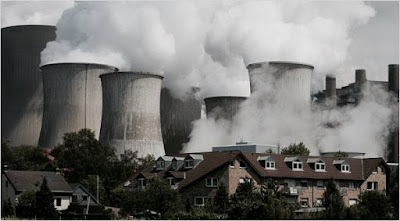Anaerobic digestion - a proven solution to our waste problem
Poplars AD plant (England)
Anaerobic digestion (AD) can used for farms, businesses and municipalities as a productive solution to a growing waste problem throughout the world. Instead of waste simply ending up in landfills, or being incinerated, waste (and purpose grown crops) could be turned into energy. AD is the process of turning agricultural waste (such as livestock manure), or municipal, commercial and industrial waste streams (such as food processing waste), into energy using micro-organisms to transform waste into a productive material used to create biogas and digestate.
An anaerobic digester generates biogas (or biomethane) which is burned on-site to generate heat, power or both (so, combined heat and power – CHP) or to generate biogas for use as an energy source for the grid (or biomethane used for heat or transportation). Also produced in the process is digestate, which is a source of nutrients that can be used as a fertilizer. Organic waste finds a purpose as it is put in a digester, such as a biomass plant, along with various types of micro-organisms to produce methane, the useful part of biogas. The anaerobic process also occurs naturally, in addition to the man-made construct in a biomass plant.
AD in a biomass plant is a cost-effective way to produce renewable energy. AD also leads to less landfill waste and is a constructive way for farms, businesses and municipalities to dispose of waste. When used for heat or transportation, as biomethane (biomethane can be used in place of diesel, given modifications to the vehicles in question), there are tremendous greenhouse gas reductions.
The entire bus fleet in Oslo, Norway, is run on biomethane from sewage treatment and organic waste, and they see a dramatic (around 70%) reduction in GHG emissions compared to fossil fuel burning vehicles. Food waste and other waste processed through AD also reduces GHG emissions substantially. Energy produced by AD has a very low carbon footprint.
The AD plant at Cannock, Staffordshire, England (called the Poplars AD plant) is an example of a successful, large-scale AD plant. The £24 million project treats commercial and industrial food and waste to create around 6MW of renewable energy for the national grid. The Poplars plant shows that large-scale AD can be successful.


